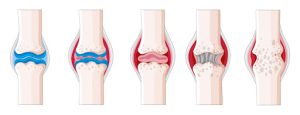Disclaimer:
This article is for information purposes only. It is not a substitute for medical advice or treatment. Seek medical care for your treatment.
What are headaches?
Headache is a discomfort in your head or around your face which is generally described as pulsating, constant, dull or sharp force. Headaches may vary in regard to agony, intensity, area and recurrence. Most of us will suffer from headaches several times during our lives. Headaches are the most typical form of agony and are the prime reason for absentees from schools and offices. Normally headaches are not perilous but some of them can be a sign of some underlying serious health condition. Headaches can be really annoying. Various headaches have their own symptoms, causes and treatments. Your doctor treats your headache according to its type.
Types of headaches:
There more than 150 types of headaches and can be divided into two main categories, which are enlisted below:
Primary headaches:
Dysfunction is the chief cause of primary headache. They do not indicate to any underlying health condition and in some cases genes play a pivotal role in developing primary headaches.
Types of primary headaches:
- Tension headaches: gives an agitating, tightening feeling around the head.
- Migraine headaches: is a pounding headache that can happen on one or both sides of your head and can pave the way for migraine aura.
- Cluster headaches: causes intense pain around or behind the area of an eye and can happen from time to time in weeks or months.
- Hemicrania continua: is a persistent, regular headache which occurs on one side of your head and is quite similar to migraine.
- New daily persistent headaches: are the constant, sudden, agonizing, regular and lasting headaches.
Your Lifestyle can lead to primary headaches. Primary headaches are not threatening but can be really annoying. Some reasons are mentioned below:
- Alcohol consumption
- Some foods or processed meats
- Nicotine consumption
- Lack of sleep
- Bad posture
- Certain exercises
- Certain exercises
- Staying hungry for prolong period
- Vigorously coughing, sneezing or cry
Secondary headaches:
Certain veiled medical conditions cause secondary headaches. Secondary headaches are not dangerous and can be fixed if the hidden health condition is treated:
- Dehydration
- Sinus
- Medication overdose
Types of secondary headaches that can point towards some serious illness are:
- spinal headaches
- thunderclap headaches
Causes of headaches:
The distress you feel in a headache comes from an amalgamation of signals between your brain and blood vessels. Nerves in blood and head muscles send pain signals to your brain. But it is hard to determine how these signals get turned on. Mentioned below are the typical causes of headache:
- Disease:
Infections such as meningitis, fever, cold or a sudden head injury can cause headache. Conditions like sinusitis, throat and ear infection, dizziness, seizures, blood pressure or brain tumor can also cause headache.
- Stress or depression:
Alcohol abuse, skipping meals, irregular sleep, muscle weakness, unnecessary medications, stress and depression contribute to headache.
- Surroundings:
Tobacco smoke, pungent smell from chemicals or fragrances, allergens, some food items, pollution, noise and weather changes can set off headache.
- Genes:
Headaches and migraine headaches run in families. Generally children and teens have migraines because their family members already have them. There are 70% chances that children will get migraine if both the parents have migraine history but chances of migraine headaches drop to 25%-50% if one parent is a migraine sufferer.
Generally it’s hard to figure out the causes of migraines. One theory states that a problem with electric charge via nerve cells causes a series of changes that result in migraines. Sometimes excessive physical activity can lead to migraine in adults.
Symptoms of headaches:
Symptoms of headache depend on its type. Some of the symptoms are:
- Perspiration
- Nausea
- Vulnerability to sounds, lights or smells
- Runny nose
- Red or teary eyes
- Dizziness
- Feeling uneasy and irritated
Symptoms that need immediate medical treatment:
These symptoms need medical attention right away:
- Fatigue
- Lightheadedness
- Loss of balance or fainting
- Numbness
- Paralysis
- Difficulty in speech
- Mental confusion
- Seizures
- Change in behavior
- Blurry or double vision
- Headache happens twice or more in a week
- Persistent headaches
- Slowly worsens
- Headache that develops after a head injury
Change your lifestyle:
Doctor will suggest some lifestyle modifications to manage your headaches. Some of the suggestions are mentioned below:
- Avert things and situations that can activate your headaches.
- Get plenty of sleep
- Regularly eat your meals
- Shed some weight if you are obese
- Find some ways to manage your anxiety and stress levels
- Doing regular exercise
- Avoiding alcohol use
- Quit smoking
Conclusion:
Chronic headache means when you have a severe or persistent headache for more than 15 days in a month. There are various treatments for managing headache. Consult your doctor if you experience any of the mentioned symptoms and he will suggest the appropriate treatment for it.




